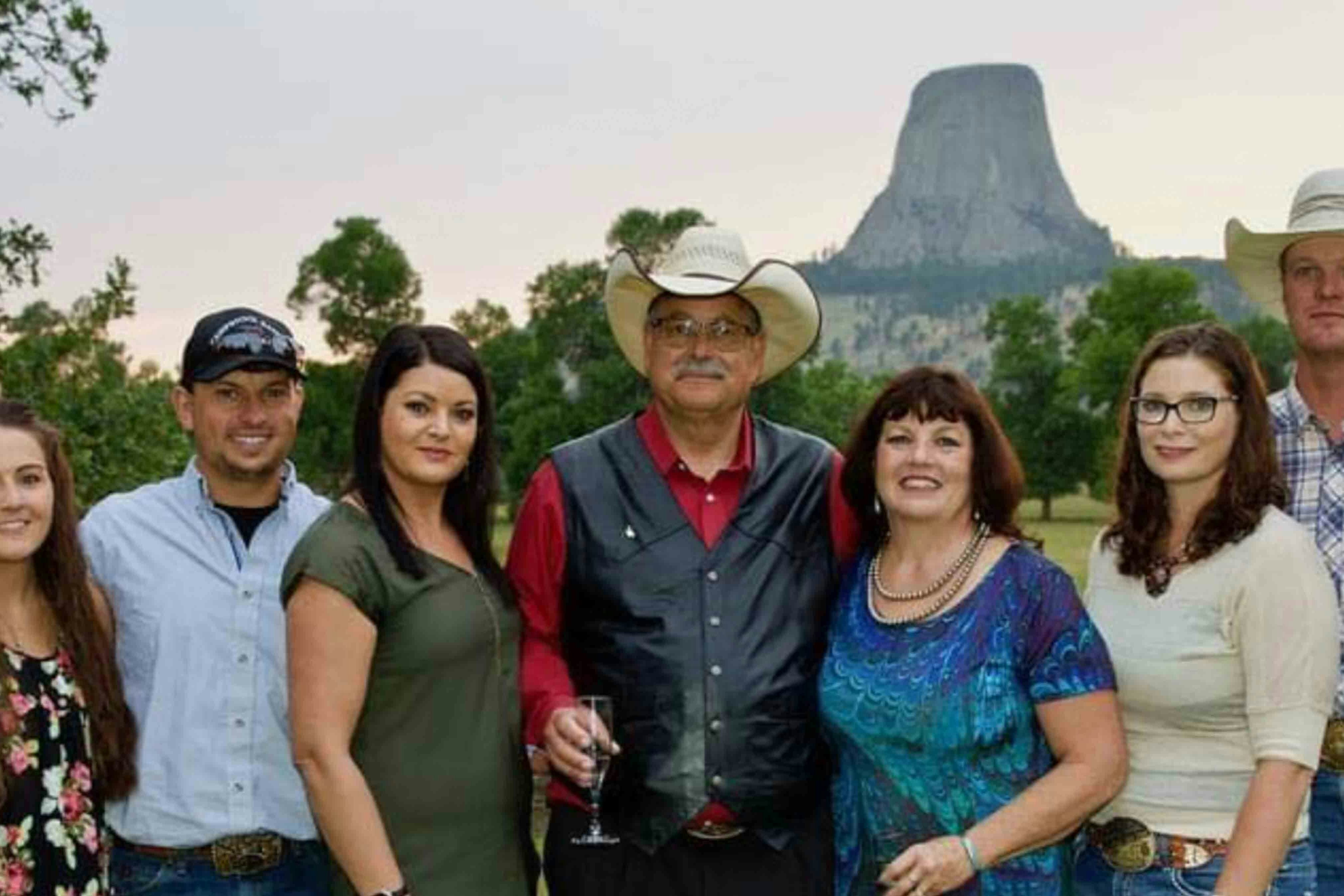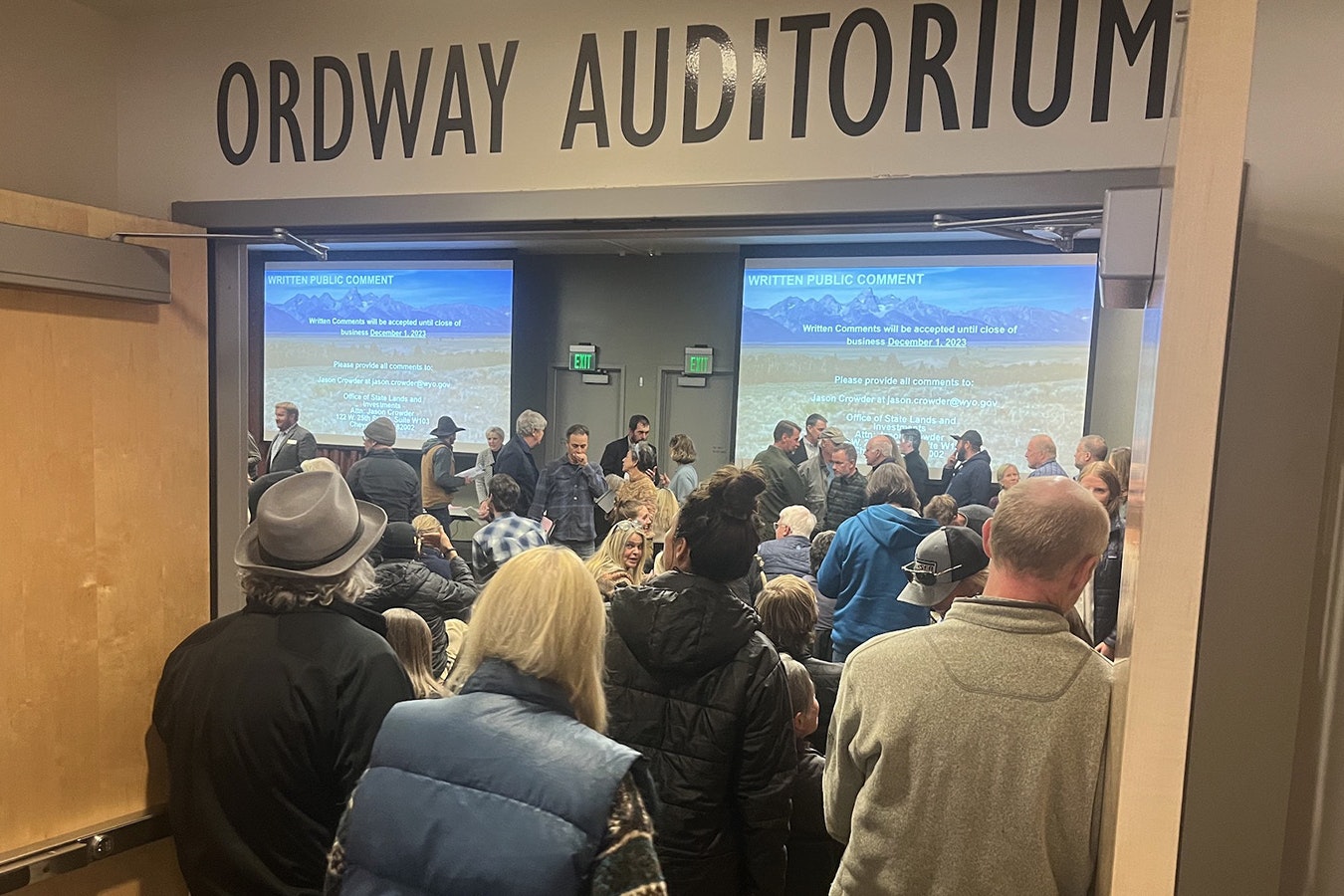The winter of 2022-2023 brought catastrophic losses to some of Wyoming’s most prized big game herds, but the decision to not feed deer and antelope was the right one, according to the Wyoming Game and Fish Department.
The decision to not feed those herds last winter was a difficult one to make, but feeding could have ended up being a game of diminishing returns, Wyoming Game and Fish Department Public Information Officer Breanna Ball told Cowboy State Daily.
“While there may be short-term success in feeding deer, it can introduce other challenges that negatively impact the long-term conservation of deer, such as loss of migratory behavior, increased disease transmission and habitat degradation,” she said.
While winter feeding will continue for some elk herds, whether Game and Fish will feed deer and antelope this winter remains an open question.
Prize Herds Devastated, Drawing Criticism
The past winter was a perfect storm of terrible circumstances for big game animals, particularly in central and southwest Wyoming.
As the winter dragged on, the term “inverse snowpack” was frequently brought up. Meaning, that instead of piling up in the mountains, some of the deepest, hardest snow was in low country and right in the middle of big game winter range.
Animals did what they always do, migrating for the winter out of the mountains into places like the Red Desert – which are usually relatively free of deep, hardpacked snow. But in frigid temperatures and howling winds, snow in the lowlands set up like hardened concrete, making it impossible for animals to paw their way though to forage.
And some of the heaviest snows came late in winter or during the spring, making a terrible situation worse.
The Wyoming Range mule deer herd, legendary for its superior genetics, was one of the hardest it. It’s feared that herd was knocked back from roughly 30,000 deer to about only 5,000.
And the fact that Game and Fish didn’t feed those deer drew some criticism.
Ron Dean of Etna supervised the Game and Fish’s elk feeding program for 33 years before retiring from the agency. He told Cowboy State Daily that feeding the deer could have cut down on the massive losses.
Timing Is Everything
Feeding deer is a tricky business, Ball said. Elk can easily and quickly adjust to readily available alternatives such as hay. But a deer’s digestive system doesn’t work that way.
“Suddenly introducing new food to deer can have devastating effect,” she said. “Like cows, deer are ruminants whose gut microbes gradually adapt to different food sources over the seasons. A mismatch of meals can lead to a high production of lactic acid, which kills healthy bacteria and causes inflammation and ulcers that do not allow the stomach to absorb nutrients.”
When it comes to feeding deer, timing is everything, she added.
“In an effort to get their gut used to artificial feed, wildlife managers would need to introduce feed in the early winter. Specialized feeds for mule deer have been developed and used in other states that mitigate some of these challenges,” she said. “However, limited trials in other states have shown that feeding has to occur early in the winter in order for it to be effective. Oftentimes, severe winters aren’t apparent until mid- to late winter when it's too late to have a positive effect.”
Causes More Problems Than It Solves
And while feeding deer might save a few over the short term, it can cause a host of long-term problems, Ball said.
“Big game animals spend their summers consuming forage and storing energy as body fat for reserves to be used during winter months. As the winter goes on animals burn their body fat to survive, which causes their body mass to decrease,” she said. “This occurs naturally, regardless of available food during winter.
“When winters get tough, there is an urge to help feed deer with specialized feed, but there are logistical and biological challenges.”
Setting up artificial feeding sites for deer can disrupt a herd’s migratory patterns. If deer get used to a food reward in a particular place, they might be drawn back there instead of following their usual migratory routes, Ball said. Those “learned behaviors” are passed down to offspring.
If successive generations of deer learn to use feed grounds – or un-learn how to migrate — that could cause long-term population decline, she said.
What’s more, deer congregating in one spot can damage habitat and speed the spread of disease and parasites. And if feeding grounds are near highways, it can increase roadkill losses, Ball said.
The sheer scale and costs of deer feeding operations could also make them impractical, she said.
Business As Usual With Elk
Feeding elk, however, is a different situation.
With elk, it’s usually less about trying to save them from starving and more about keeping them out of conflict with ranches, Ball said. During the winter, hungry elk can tear down fences and raid ranchers’ haystacks. And close contact between cows and elk can transmit diseases such as brucellosis to cattle.
Brucellosis causes cattle to abort their calves. And outbreaks in cattle herds here could threaten the transport and trade of Wyoming beef in other states.
As things stand now, elk feeding this winter will be about the same as it has been, Ball said.
“The Department (Game and Fish) operates 21 elk feedgrounds in Teton, Lincoln and Sublette counties. Elk feeding will occur on these feedgrounds as it has in the past,” she said.
“Regional wildlife managers will evaluate winter conditions and animal distribution to determine if emergency elk feeding is necessary in accordance with the Wyoming Game and Fish Commission policy,” Ball added.
Will Deer And Antelope Get Fed This Year?
The good news is, the animals that pulled through last winter had far less competition for spring and summer forage. And given the amount of moisture from massive snowpack, and a steady rainfall this summer, the forage was excellent.
So, Wyoming’s big game animals are going into this winter in excellent shape, which greatly boosts their chances of survival, Ball said.
As to whether Game and Fish will consider feeding deer or antelope if things get nasty again this winter, that’s yet to be seen, she said.
“The Wyoming Game and Fish Department will continue to evaluate winter severity and the need for emergency supplemental feeding throughout the winter months,” she said. “The department will continue to analyze new information as it becomes available that could help address some of the most important challenges to winter feeding of deer.”
What About The 2024 Hunting Seasons?
Huge winterkill losses prompted cutbacks in deer and antelope hunting tags in some areas this fall. Whether that happens again in 2024 also remains to be seen, Ball said.
“The Department’s game wardens and biologists adaptively manage mule deer and pronghorn toward established herd unit objectives through hunting seasons,” she said. “Managers will conduct wildlife surveys this winter and evaluate harvest results in February. Following this data collection period, the 2024 season recommendations will be presented during public meetings across Wyoming in March.”
Everybody Can Pitch In
“While it is difficult to watch wildlife populations suffer severe winter losses, it is important to remember Wyoming’s wildlife have been enduring winters like last year for thousands of years. With healthy habitat conditions, wildlife are resilient and can recover to pre-winter numbers like they have in the past,” Ball said.
Meanwhile, Game and Fish and wildlife conservation organizations are pitching in to help preserve deer and antelope habitat and migration routes. In the long run, that’s what truly helps the herds, Ball said.
And there’s other ways to help, she said.
“We can all come together to improve mule deer habitat by volunteering for habitat projects, purchasing a Wyoming wildlife conservation plate, purchasing Super Tag raffle tickets or getting involved with a local conservation organization,” she said.
“Landowners can help wintering wildlife by leaving gates open where possible to allow unimpaired movement of animals across the landscape and modifying fences to make them more wildlife-friendly,” Ball added.
Mark Heinz can be reached at mark@cowboystatedaily.com.





